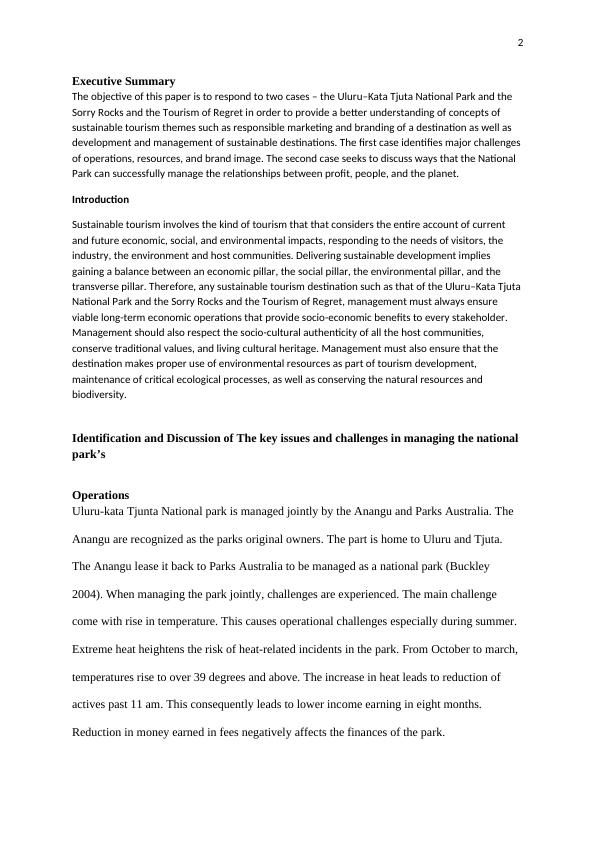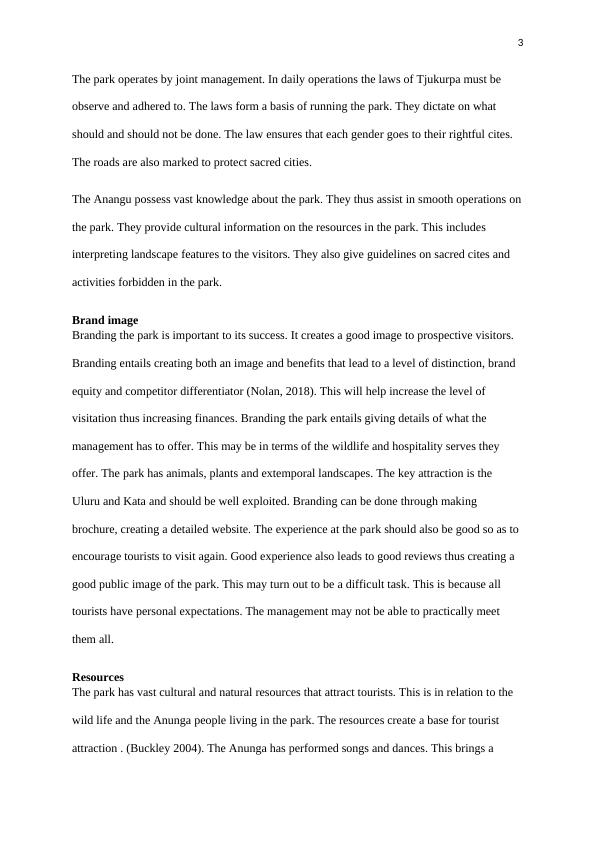Sustainable Tourism: Challenges and Solutions for Uluru-Kata Tjuta National Park and Sorry Rocks
Marking rubric for Assessment Task 3B in the course THT2114 Sustainable Operations and Destinations.
9 Pages2065 Words420 Views
Added on 2023-06-03
About This Document
This paper discusses the challenges and solutions for sustainable tourism in Uluru-Kata Tjuta National Park and Sorry Rocks, focusing on responsible marketing, development, and management of sustainable destinations. The challenges include operations, resources, and brand image, while the solutions involve managing the relationships between profit, people, and the planet. The paper also reflects on personal insights about sustainable management and responsible consumption.
Sustainable Tourism: Challenges and Solutions for Uluru-Kata Tjuta National Park and Sorry Rocks
Marking rubric for Assessment Task 3B in the course THT2114 Sustainable Operations and Destinations.
Added on 2023-06-03
ShareRelated Documents
End of preview
Want to access all the pages? Upload your documents or become a member.
Managing Uluru-Kata Tjuta National Park: Key Issues and Challenges in Responsible Hospitality and Tourism
|11
|2658
|222
Tourism Management.
|7
|472
|1
Uluru: A Cultural Landform
|7
|1874
|82
Sustainable Operations and Destinations
|10
|2720
|459
Sustainable Tourism Business
|13
|1808
|56



